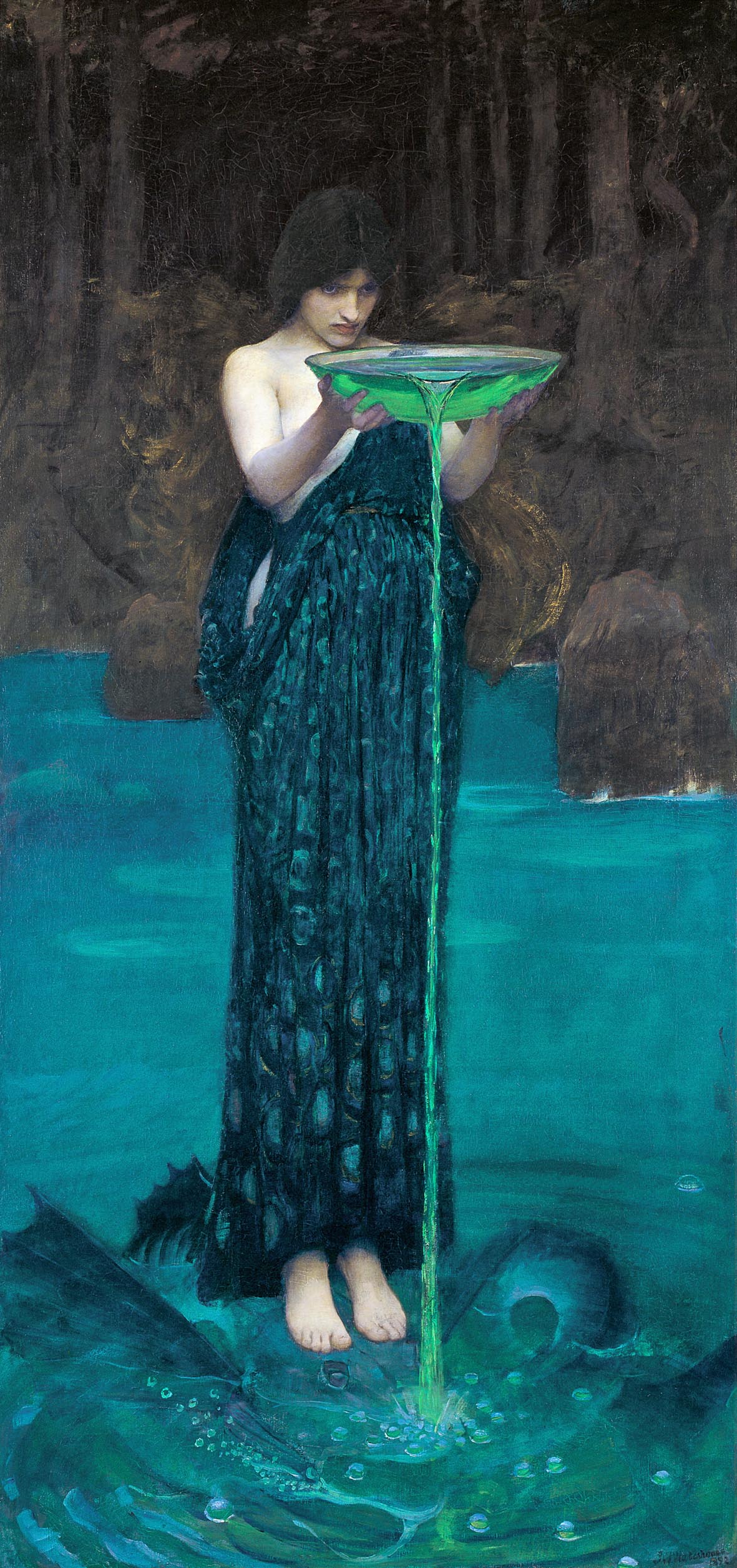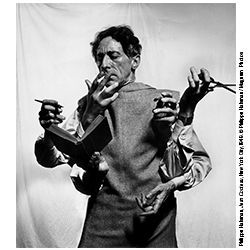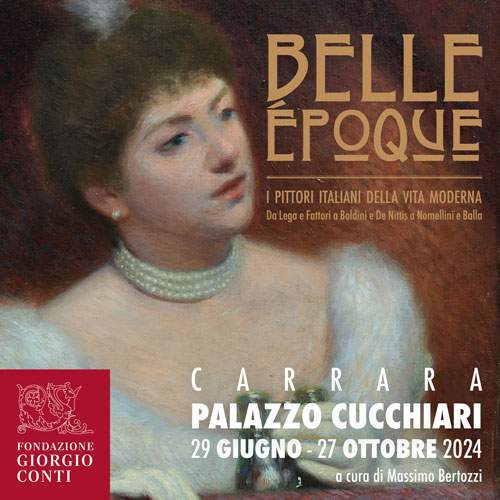Cursed femininity: the witch according to John William Waterhouse
When the eye lingers on a work by John William Waterhouse (Rome, 1849 - London, 1917), the Pre-Raphaelite painter of the mid-nineteenth century, the first thing that jumps to the eye is a feminine unlike any other: at times it is melancholy, proud, at times it is dramatic and romantic in the totality of its meaning. Waterhouse’s women are enchantresses; they all are and always have been. The success of the painter’s depictions of women was strongly influenced by his classical training, which gave him a deep knowledge of ancient depictions of mythological figures such as Circe, Medea, Hecate and Cassandra, as well as mythological creatures such as harpies, gorgons and sirens. Among the dark creatures and enchanting women, however, there are figures that society defines as skillful strategists, capable of flight, fascination, using black magic, and joining the devil on Sabbath nights. They are the lovers of the devil: the witches. They are the marginalized women, removed from society because of their aura and their feminine so different. Throughout the 13th and 17th centuries, the Church resents their presence; men and women equally so. It is then decided to try them, torture them, burn them at the stake or hang them. Years ahead of the Inquisition their figure is taken up by artists who portray their proud features. In 1795 William Blake portrayed Hecate, while Henry Fuseli in 1796 painted The Night Witch visiting the witches of Lapland.
Waterhouse was fascinated by her; the same fascination that in the general culture of centuries past witches were able to convey. Overwhelmed, therefore, by the witch and the enigmatic figure of the sorceress Circe, who plays a prominent role in Homer’s Odyssey and whom Waterhouse would paint at three separate times in his artistic career, namely Circe Offering the Cup to Ulysses in 1891, Circe Envious in 1892, and Circe in 1911, the Pre-Raphaelite painter returned repeatedly to the idea of magic throughout his life. As in the first two works of the Circe series, the artist often painted women engaged in acts of prophecy, charms or incantations, showing a particular fascination with the figure being analyzed. However, it is only The Magic Circle, currently housed at Tate Britain in London, painted by Waterhouse in 1886, and thus a few years before Circe, that fully represents the theme of witchcraft. The objects in the scene, such as the brazier, staff, skull, stones and beasts, along with the barren rocks and gloomy sky, create an atmosphere of suspension. The elements, elaborated through the use of color, serve to immerse the central figure in an atmosphere laden with references to magic and an underground realm of curses and spells.
In contrast to the witches depicted before and after Waterhouse, such as the figure in Evelyn de Morgan’s 1903 work Love Potion, William Waterhouse’s witch is distinguished by the emphasis of her proud posture, the gaze that expresses neither anger nor envy, and the decidedly refined approach to the clothes and accessories she wears. The Magic Circle demonstrates Waterhouse’s ability to reimagine the figure of the witch, and crucial to this achievement is the integration of various cultural references. In addition to revising the conventions of previous representations of witches, the work testifies to the artist’s fascination with the occult in its various multicultural manifestations.





The interest was surely fueled by the cultural milieu of the time, devoted to the occult and Gothic literature. Outside the circle, the barren, desolate landscape is populated by ravens and a frog, symbols of evil and associated with witchcraft. With her wand in her right hand, the woman draws a protective magic circle around herself. It is likely that the intent of the spell is positive: for the witch within the circle is not sexualized like many of the more dangerous characters depicted by Waterhouse and her contemporaries. She is bathed in soft, murky light, surrounded by flowers and wearing a belt, a symbol of fertility and not sexuality. In addition to this, the figure is adorned with elements of beauty such as flowers, tied at the waist through the cloth belt and laid on the ground ready to be thrown into the cauldron. The half-moon shaped scythe used to cut the herbs additionally alludes to the symbolism of Hecate, a psychopompic figure, goddess of shadows, magical arts and witchcraft, or the Celtic tradition.
Waterhouse’s interest in a multicultural perspective is also given by the woman’s darker complexion, which recalls the features of a woman of Middle Eastern descent while her hairstyle resembles that of an Anglo-Saxon prima. There is also a clear reference to Greek mythology in her robes: placed in the lower part of the dress is in fact an archaic Gorgon in the position of the Knielauf Schema (Kneeling Race Schema). Indeed, the symbolic importance of the Gorgon in the time of archaic Greece should not be underestimated as it represents a figure of terror and protection against the spectres of the realm of the dead.
The witch, mediator between the earthly and otherworldly worlds, plays a similar role. She is able to connect with the shadow world and emerge from it without injury. According to Robert Upstone, by integrating elements from different traditions and eras, Waterhouse may be suggesting the continuity of hermetic knowledge, or esoteric knowledge, across different cultures; although not explicitly stated, this is an aspect that frequently resonates throughout his artistic output. This aspect is also supported by the image of theOuroboros, or Ouroboros tied around the witch’s neck. Figuratively, this is a snake biting its own tail: its earliest depiction is found in an ancient Egyptian funerary text, called The Enigmatic Book of the Netherworld, found in tomb KV62 of Pharaoh Tutankhamun of the 18th Dynasty. Although the Ouroboros represents the eternal cycle of life, creation from destruction and life from death, and is found in many cultures, its symbol is closely related to the Egyptian legend of Isis and Osiris, whose union and destruction generates the universe. Therefore, the importance of Egyptian mythology in the context of the esoteric tradition associated with Waterhouse cannot be underestimated, as it was a central theme in the revival of Hermetic study and Egyptian worship in Britain in the 1880s. The rocky environment, with the arrangement of its openings almost reminiscent of tomb entrances, evokes an Egyptian valley, and is composed mainly of a palette of beiges and browns, varying from lighter to darker tones. The almost misty tones of the landscape convey an immersive impression of energy, allowing the witch at the center of the work to receive full attention. Even after an analysis of The Magic Circle, it becomes apparent how the murky tones contribute to a dynamic environment of movement, not stagnation, in which the figure of the witch stands out in all its evocative power.
Warning: the translation into English of the original Italian article was created using automatic tools. We undertake to review all articles, but we do not guarantee the total absence of inaccuracies in the translation due to the program. You can find the original by clicking on the ITA button. If you find any mistake,please contact us.



















